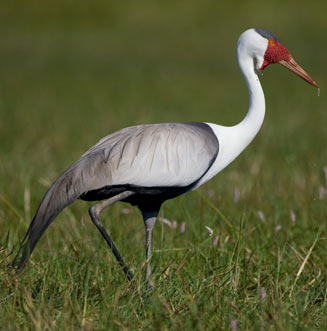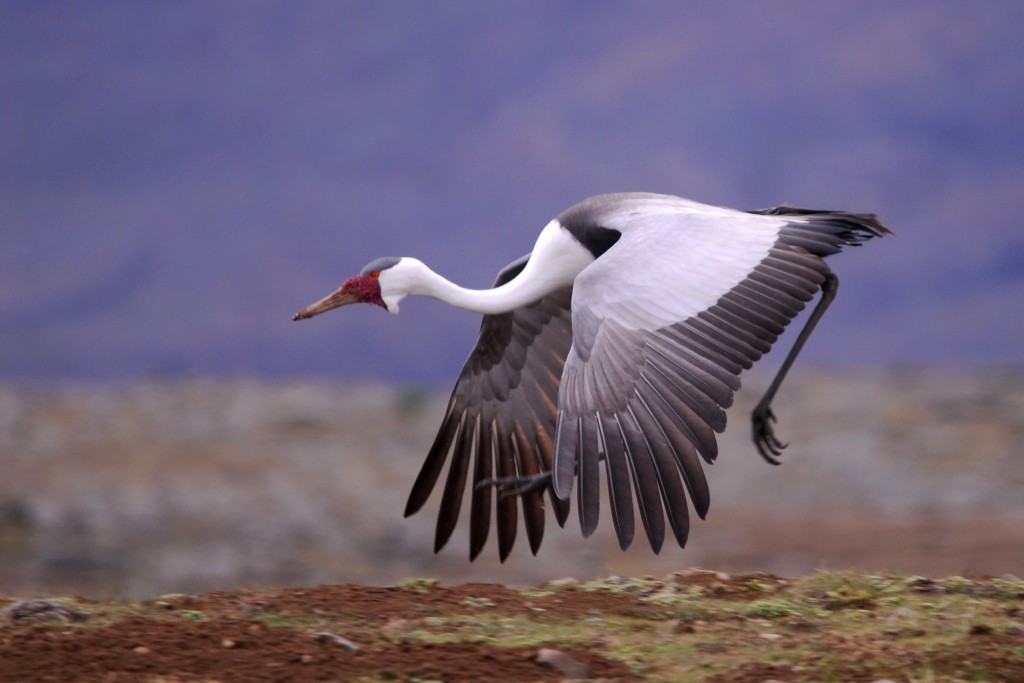
Bugeranus carunculatus
SUBFAMILY
Gruinae
TAXONOMY
Ardea carunculata Gmelin, 1789, Cape of Good Hope. Monotypic.
OTHER COMMON NAMES
English: Great African wattled crane; French: Grue caronculйe;
German: Klunkerkranich; Spanish: Grulla Carunculada.
PHYSICAL CHARACTERISTICS
Height 69 in (175 cm); wingspan 90.5–102.3 in (230–260) cm;
weight male 18.3–18.7 lb (8.3–8.5 kg), female 15.6–17.4
(7.1–7.9 kg). Body and wings gray and black, white neck, wattles
white with some red skin.
DISTRIBUTION
South-central Africa, with some populations in Ethiopia, South
Africa, Namibia, and in the Zambezi Delta on Africa’s east coast.
HABITAT
Dependent on wetlands.
BEHAVIOR
Nonmigratory. Rarely leave their territories.
FEEDING ECOLOGY AND DIET
Their primary food is sedge tubers, which they find in shallow
wetlands.
REPRODUCTIVE BIOLOGY
Many nests contain only a single egg. Incubation lasts up to 40
days, and the fledgling period is 103 days or more.
CONSERVATION STATUS
Endangered, and listed on CITES Appendix II. Protected
throughout much of their range.
SIGNIFICANCE TO HUMANS
These birds receive great attention in South Africa as one of
the nation’s most endangered birds.
Photo Gallery of - Wattled crane




 Animalia Life
Animalia Life